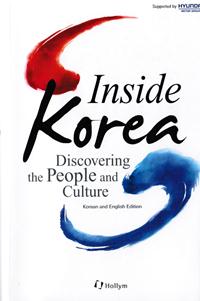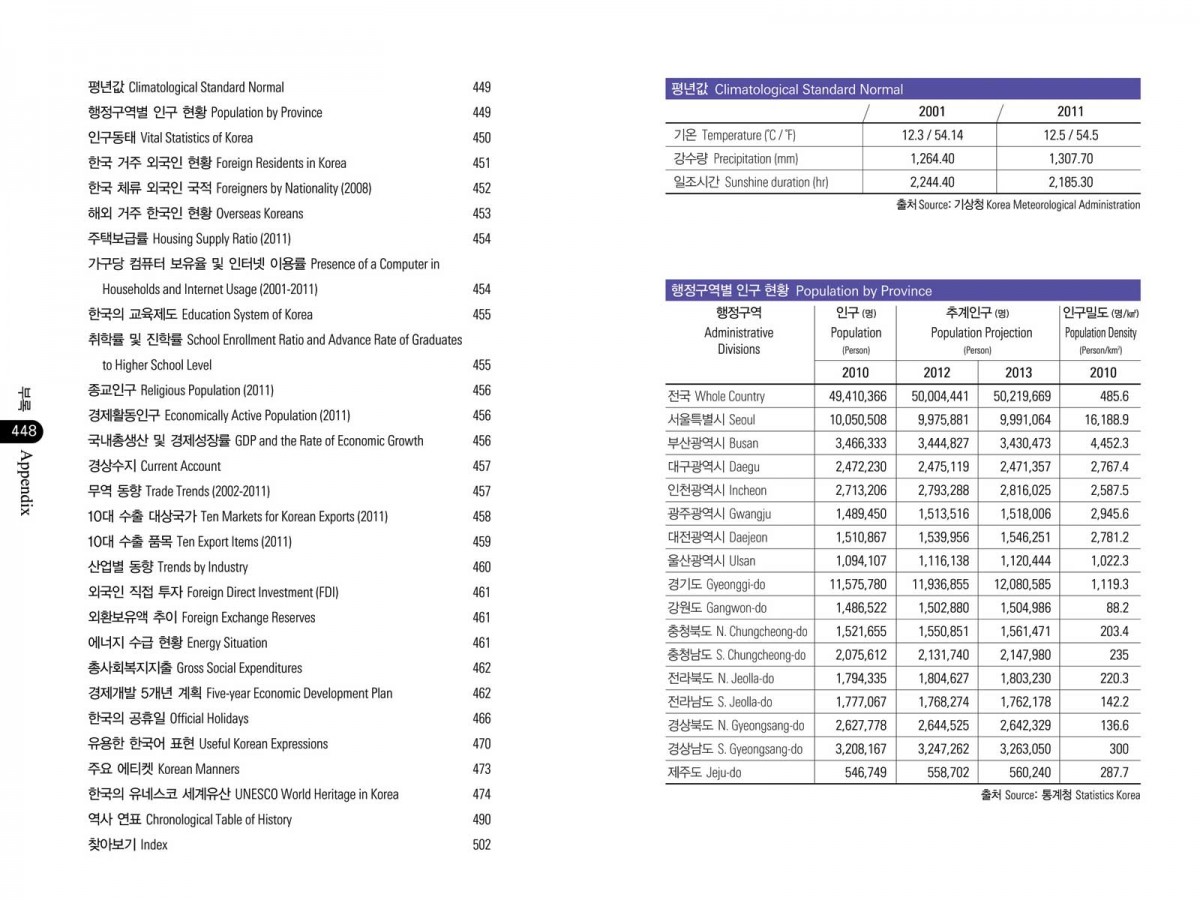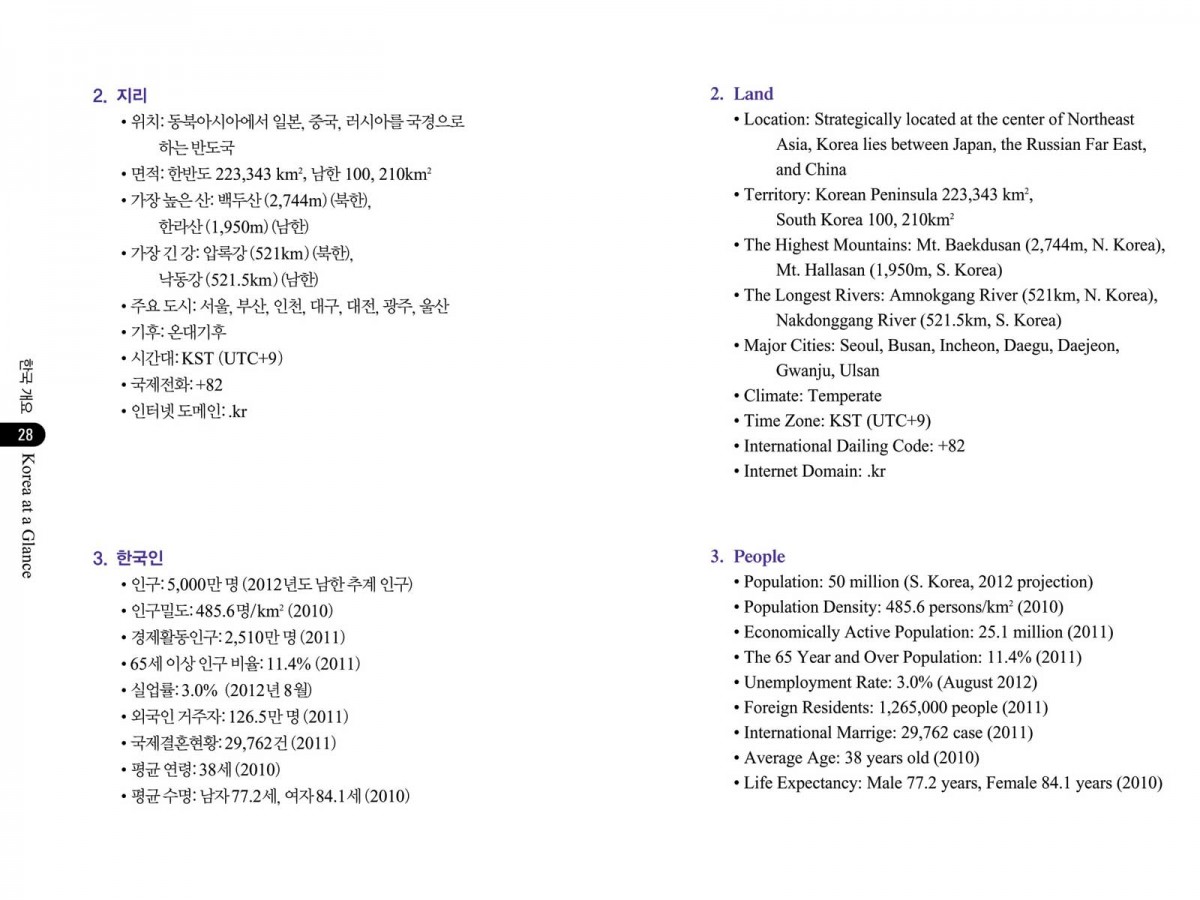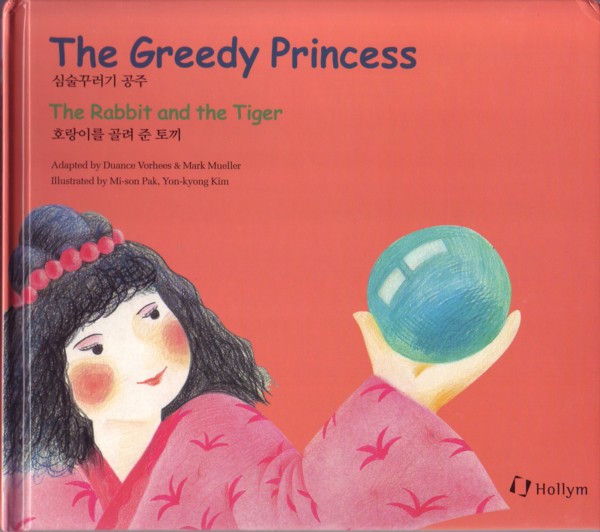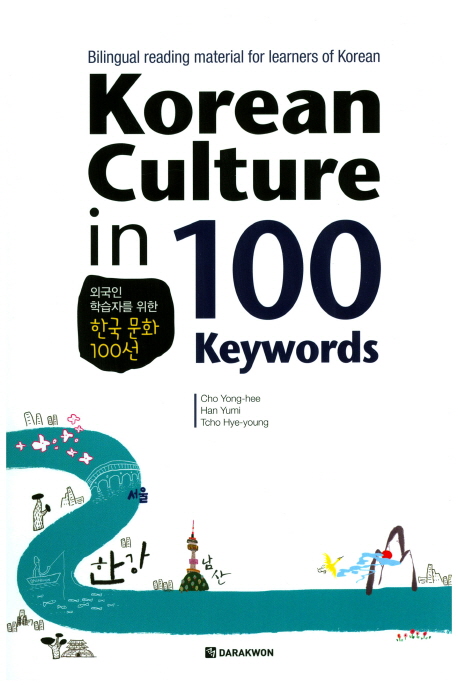by Lee, Eung-chel et al.
Inside Korea: Discovering the People and Culture (Bilingual) Bilingual English / Korean
19,90 €*
% 29,90 €* (33.44% gespart)-
Art.Nr./ISBN: 9781565914032
-
Verlag: Hollym
-
Seitenzahl: 512
-
Einband: Hardcover
-
Jahr: 2022 (2nd edition)
-
Sprache: English, Korean
-
Medientyp: Book
-
Autor: by Lee, Eung-chel et al.
Auf Lager. Versandfertig in 2-4 Werktagen
Produktinformationen "Inside Korea: Discovering the People and Culture (Bilingual)"
Description:
Korea is a nation with about five thousand years of history and rich cultural heritage. It is a country which realized stunning economic growth and democratic development in a very short span of time. In addition, Korea has recently been put on the proverbial global map, propelled by the Korean wave which hit the world, yet the country is still far from well-known across the world. What is Korea really like? In fact, it is not easy for both Koreans and non-Koreans to answer to this question. This query is where the idea of this book was first created.
This book is designed to increase understanding about Korea for people around the world and to present Korean society and culture in a thoughtful manner to foreigners who are not familiar with it. While a great deal of information about any country can be accessed through the internet, this book provides a broad range of information in an organized and systemized collection that is portable and easily accessible to many people. This bilingual publication is presented in both English and Korean in hopes that the information and appreciation of Korea can be shared with people around the world.
This book mainly consists of three parts. The first part (pp. 1-32) offers a brief introduction to Korea with reliable barometers in many aspects of Korean identity. The main part (pp. 33-446) of this book reveals Korea by eight categories: geography, history, politics, economy, society, culture, religion and religious culture, and scientific technology and industry. Two special commentaries on the North-South relations and East-West cultural differences are to help readers better understand Korea as a "divided country" with "Confucian culture." Finally, the last appendix section contains statistical information for the reader's convenient reference.
CONTENTS
머리말 Preface | 일러두기 Notes | 한국개요 Korea at a Glance
01 지리 Geography
오랜 역사 속에서 한국만의 문화적 특징을 만들어온 데에 영향을 끼친 지리적인 환경, 즉 위치, 기후, 지형, 식물과 동물, 행정구역, 인구와 도시 등에 대해 살펴본다.
들어가는 말 | 1. 위치와 영역 | 2. 기후와 지형 | 3. 식물과 동물 | 4. 인구 | 5. 가옥과 취락 | 맺음말
This chapter looks at Korea’s location, climate, topography, plants and animals administrative districts, population, and cities, which greatly affected the country and Koreans’ life for so long.
Introduction | 1. Location & Territory | 2. Climate & Topography | 3. Plants & Animals | 4. Population
5. Settlements | Conclusion
02 역사 History
한반도에 처음 사람이 거주하기 시작한 구석기 시대부터 2008년에 들어선 이명박 정부에 이르기까지 한국의 역사를 간략하게 살펴본다.
1. 한국사의 여명 | 2. 삼국의 발전과 통일신라 그리고 발해 | 3. 황제의 나라 고려 | 4. 유교 국가 조선
5. 근대화를 향한 노력과 좌절 | 6. 일제강점기의 수난과 독립운동 | 7. 대한민국의 성립과 발전
This chapter briefly describes the history of Korea from the early Paleolithic Age to the establishment of current government.
Introduction | 1. The Dawn of Korean History | 2. The Three Kingdoms, Unified Silla, and Balhae
3. Goryeo: Land of Empire | 4. Joseon, the Confucian State | 5. Modernization: Exertion & Frustration
6. Japanese Colonial Rule & the Independence Movement | 7. Establishment & Development of the Republic
of Korea
03 정치 Politics
This chapter introduces Korea’s political system and diplomatic relations with neighboring countries.
1. Constitution | 2. The Presidential System | 3. National Assembly | 4. Diplomacy
5. Symbols of Korea (Republic of Korea, Aegukga, Taegeukgi, Mugunghwa)
한국이 지향하는 정치이념과 체제를 살펴보고, 국제관계 속에서의 위치와 역할에 대해 조명해 본다.
1. 헌법 | 2. 대통령제 | 3. 국회 | 4. 외교 | 5. 대한민국의 상징들 (대한민국, 애국가, 태극기, 무궁화)
[특집] 남북관계의 이해
남한과 북한이 분단하게 된 배경과 한국전쟁, 그리고 한국전쟁 이후부터 현재까지의 남북관계에 대해 고찰해 본다.
[Special Feature] Understanding of North-South Relations
This chapter examines the background behind the national division, the Korean War, and North-South relations after the war to help international community gain a greater understanding of the two Koreas.
04 경제 Economy
일제로부터의 해방 이후 60여 년 동안의 한국의 경제발전 과정과 정책들을 살펴보고 이를 통해 앞으로 한국 경제가 해결해야 할 문제들을 짚어본다.
들어가는 말 | 1. 전후 경제발전 전략과 그 성과들 | 2. 중공업화 정책과 80년 위기 이후
3. 86년 이후 경제민주화와 금융자유화 | 4. 1997년 금융위기와 대응 | 5. IMF 위기 이후 현대의 한국 경제
In this chapter, the history of Korea’s economic growth and the strategies that make it happen are briefly reviewed. In addition, the causes of the current economic problems are examined in detail.
Introduction | 1. Economic Strategies and Achievements after the War
2. Heavy Industry Strategy, the Depression of 1980 and Beyond
3. Economic Democracy and Banking Liberalization after 1986
4. The Financial Crisis of 1997 and Solution | 5. The Korean Economy after the Asian Financial Crisis
05 사회 Society
지역적, 계층적, 인종적, 그리고 문화적 다양성이 커지고 있는 현대 한국 사회의 역동적인 모습과 한국인에 대해서 살펴본다.
들어가는 말 | 1. 압축 근대화 | 2. 인구, 가구, 주거 | 3. 가족, 혼인, 여성 | 4. 국제결혼, 다문화사회
5. 교육 | 6. 고용과 복지 | 7. 종교생활 및 여가생활
In this chapter, the dynamic transformation of Korean society and its people are examined.
Introduction | 1. Compressed Modernization: The Key to Understanding Modern Korean Society
2. Population, Households, and Dwellings | 3. Family, Marriage, and Women
4. International Marriages and a Multicultural Society | 5. Education
6. Employment and Welfare | 7. Religion and Leisure Time
06 문화 Culture
한국인의 일상생활을 구성하는 다양한 문화적 요소 중에서 옷, 음식, 주거 양식 등을 살펴보고, 최근 전세계적으로 주목받고 있는 한국 대중문화의 몇 가지 특성을 소개한다.
들어가는 말 | 1. 한국어와 한글 | 2. 한국의 통과의례 | 3. 한국인의 옷 | 4. 주거 | 5. 음식
6. 예술과 대중문화 | 맺음말
This chapter reviews some cultural elements which are a part of the everyday life of Koreans, such as clothing, food, housing, and popular culture.
Introduction | 1. Korean and the Korean Alphabet | 2. Rites of Passage | 3. Clothes
4. Dwellings | 5. Food | 6. Fine Arts and Pop Culture | Conclusion
[특집] 동서양 문화 비교
동서양의 문화 차이를 한국과 미국을 중심으로 비교 고찰해 본다.
[Special Feature] Comparison of Eastern and Western Culture
This chapter focuses on a comparison between Korean and US culture to help people from other countries gain a better understanding of Korea and its culture.
07 종교와 전통문화 Religion and Religious Culture
한국 종교의 특징과 각 종교가 끼친 사회문화적 영향에 대해 살펴본다.
들어가는 말 | 1. 기독교 | 2. 불교 | 3. 유교 | 4. 샤머니즘 | 맺음말
This chapter describes various features associated with religions in Korea as well as cultural traditions that have been influenced by religions.
Introduction | 1. Christianity | 2. Buddhism | 3. Confucianism | 4. Shamanism | Conclusion
08 과학기술과 산업 Scientific Technology and Industry
한국이 일제강점기와 한국전쟁을 통해 궤멸상태에 이르렀던 경제를 회복시키고 나아가 괄목할 만한 성장을 이루게 된 배경과 과정에 대해 산업 분야별로 살펴본다.
들어가는 말 | 1. 건설 산업 | 2. 철강 산업 | 3. 조선 산업 | 4. 자동차 산업 | 5. IT 산업
6. 과학기술의 육성과 보급 | 맺음말
This chapter looks at the background of Korea’s stunning economic growth and the process of industrial development after 1960.
Introduction | 1. Construction Industry | 2. Steel Industry | 3. Shipbuilding Industry | 4. Automotive Industry
5. IT Industry | 6. Development and Dissemination of Science and Technology | Conclusion
참고문헌 Bibliography | 부록 Appendix
15, Jongno 12-gil, Jongno-gu
03190 Seoul
Südkorea
Prinzenweg 10
93047 Regensburg
Deutschland
Anmelden

